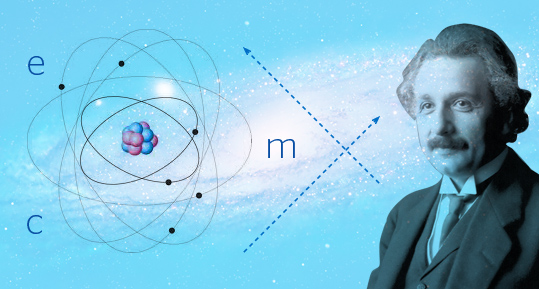Intellectual priorities have changed considerably in recent centuries. What is popular today is the cult of scientific truths and science. It is natural that this is the case because the technological progress made by man over the past two centuries has been overwhelming. Science has made it possible for us to have a quality of life that past generations never even dreamed of. It seems important to stress that, despite everything, science often does not get to the bottom of things, to understand and explain the ultimate causes of the phenomena we observe. However, we have faith in science. Some examples are enough to clarify this point.

- It seems to us that matter is the most obvious and “real” thing that surrounds us. Everyone also knows that matter is composed of atoms. What is less known by the layperson is that the atom is a kind of micro tennis ball, composed of a nucleus made up of protons and neutrons and a periphery where the electrons, which are almost pure negative electric charges, “navigate”. The atom’s mass is mostly concentrated in the nucleus. That said, this core represents less than one ten-thousandth of the volume of the atom. It is the size of a football in the middle of a gigantic stadium. In other words, matter is practically empty. More surprisingly, protons and neutrons (the atom’s mass) can be decomposed into elementary particles called “quarks”, which supposedly come from tiny filaments of vibrating energy called “strings”. The latter is just a hypothesis and not proven. Clearly we do not get to the bottom of things in this topic.
- Energy is another interesting topic. We know there are many kinds of energy: hydro, thermal, chemical, nuclear, etc. The thing they all have in common is their ability to do work. That said, energy is governed by the so-called fundamental principles of thermodynamics. The first principle says that total energy (today we would say total energy/matter) always remains constant. The second principle states that the energy to carry out work has to move from a hot to a cold spot or from a point of greater energy “concentration” to another that is less concentrated. This process is irreversible and leads to a kind of gradual degradation of energy that is called entropy. When entropy is maximized, energy will no longer have the capacity to carry out the work. How do we therefore define it? What is energy really? The truth is we do not know, because even in this case we do not get to the bottom of things.
- The concept of time has always been something that has seemed beyond any debate. It is the dimension that makes it possible for not all events to happen at once and it was felt that it was something absolute and equal for all those living under its tyranny. In a rather quaint way it could be said that it was the ticking of the clock. But Albert Einstein undertook to end this illusion. In his theory of special relativity and, later, in his theory of general relativity he showed that time is subjective to each individual and depends not only on the speed of travel, but also the gravitational field. Two twin brothers moving at different speeds or living in different gravitational fields will age at different rates and one will end up older than the other. The truth is that this is clear to scientists, but goes against the “basic instinct” of the layperson. We do not understand this thoroughly either, but that does not stop us believing in science.
- The planet we live in gives us the impression of being very solid and stable. Well, today we know that our world revolves around the Sun and that the Sun is a star in the second division of the millions and millions of stars that form our galaxy, the Milky Way. Many of these stars must have their own planetary systems, although we do not know for sure. Our galaxy is so vast that light takes a hundred thousand years to cross it from one end to another. In our Andromeda Constellation major stars are about seventy-five light-years away; however, a light spot that was long thought to be a gas cloud of that constellation can be seen relatively easily in it. The truth is that light has taken two million years to reach us because it is not part of that constellation, or even our galaxy. It is the light from another galaxy that is exactly the same as ours, which we could consider to be our twin. There are billions of galaxies in the Universe and all are moving away from each other at increasing speeds as if they were pen dots painted on the surface of a rubber balloon that is blown up rapidly. Where are we going? We don’t know. What is clear is that the impression of stability of our planet is an illusion or a mirage. We are a speck of dust that is being rapidly swept in an infinite cosmos.
The conclusion we can draw from these examples is that in analyzing any situation, especially if it is new, or in studying any problem, we must adopt a broad outlook and maintain as much intellectual flexibility as possible not to get carried away by appearances or first sight. Sometimes the first impulse can lead us in the wrong direction.
Ramón Reis
Economist, Madrid (Spain)
Comments on this publication